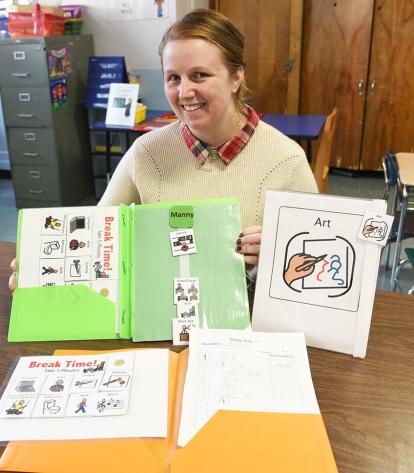In my first four years as a special education teacher, I taught students with autism in a 6:1:1 classroom using an intervention known as structured teaching. But later on, I began to wonder: Is it only students with special needs who thrive in a structured, predictable and consistent environment?
Of course not! The goal of structured teaching is to support students to grow as individuals and gain independence. Structured teaching promotes confidence and success — something we want for all students regardless of their individual learning needs.
Structured teaching for students with autism uses a very specific framework. In a classroom that uses structured teaching, areas are clearly defined and labeled. There is minimal clutter, and students have specific seating arrangements.
Teachers provide individualized schedules tailored to a student’s developmental level that follow the flow of the class schedule but also incorporate students’ independent task time and their related services (such as speech, occupational and physical therapy).
Students independently complete tasks that reinforce the skills they learn in the classroom and help them progress toward the goals of their Individualized Education Program (IEP).
Last, and probably most important, this schedule is organized visually so students can see a clear breakdown of each task they need to complete and follow their tasks in order.
I think there are three particular elements of structured teaching from which all students — not just those with special needs — can benefit.
The first element is an individualized schedule. Just because students are not in a self-contained classroom does not mean they do not have individual needs to address. Students should be encouraged to be accountable for their daily schedule and routine. This also promotes lifelong skills of time management and accountability.
Teachers can provide their students with an overall classroom flow of the day but also allow students to create their own schedules in which they input activities or appointments and sessions specific to them. Students can also be accountable for where they are supposed to be doing work or who they are supposed to be working with during a given content area.
The second beneficial element of structured teaching is individualized student work. In structured teaching, students may rotate to work at stations, which are usually set up at individual desks in separate locations of the room. In a general education setting, this is a great opportunity to provide students with individualized work that is connected to what they are learning but can be completed independently. This allows classroom staff to work with other students in small groups or one-on-one conferences.
The final element of structured teaching is the structure and layout of the classroom. For many people, it is extremely hard to focus and work in areas that are cluttered and disorganized. The rule of thumb in structured teaching is that everything within a classroom has a purpose. The furniture is laid out in such a way that it allows for fluid movement around the classroom. Areas within the classroom should be clearly labeled both on the outside and on the inside. For example, the classroom library is labeled as a library, but within the library various book genres and levels are also labeled appropriately. Work materials that students need should ideally be organized in bins that are clearly labeled.
If the classroom environment is organized and clearly labeled, it allows students to be able to focus on their work, move appropriately and minimize the amount of questions. Organized classrooms also promote student independence.
As teachers, at the end of the day we all want to promote independence and foster life skills that will stay with students outside the classroom. Structured teaching is a practice that can do just that.
